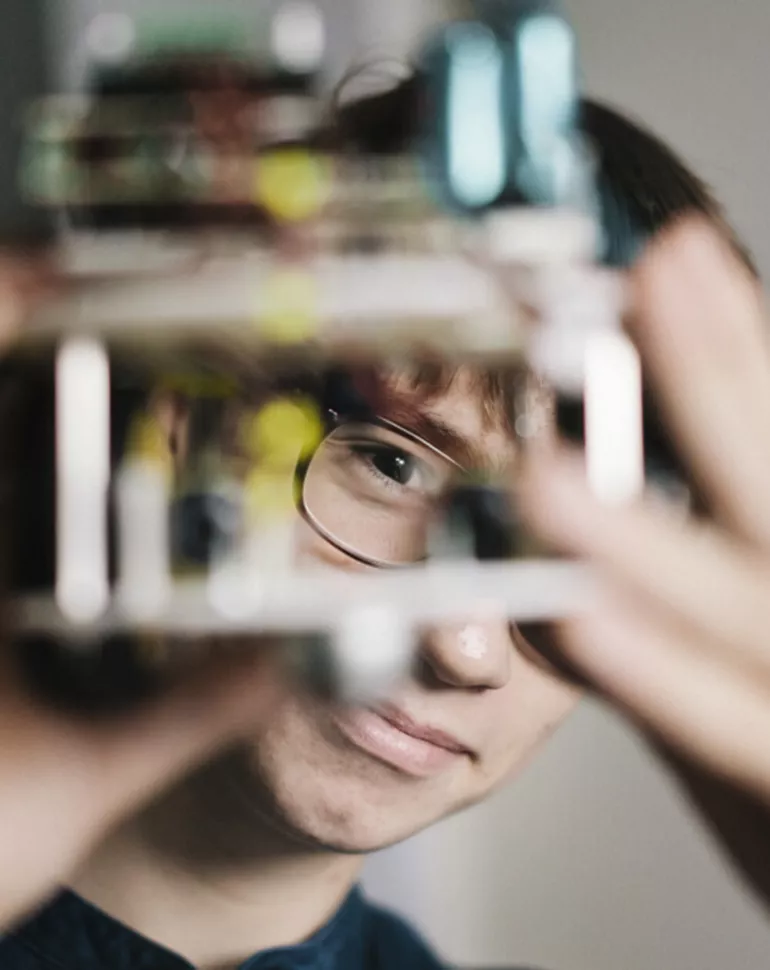5. Establish your myopia management pricing model
Experts suggest charging a flat rate for the initial consultation and to do this as a separate appointment following the eye exam. The treatment and follow-up are generally billed in three ways:
Pay an annual subscription that includes treatment and follow-ups. This will change based on the treatment chosen and the time required.
- The benefit is the Px is locked in for the year
- The parents don’t have to worry about additional costs
- The drawback is it is a large upfront cost
Pay as you go. Each follow-up appointment has a cost applied and the treatment options are charged individually.
- The benefit is, it’s broken down into much smaller more digestible chunks
- If treatment options change you can easily adapt with an a-la-carte approach
- It is easy to execute and understand
Hybrid. Annual subscription for all follow-up appointments and a separate charge for the treatment option itself.
6. Solidify your reputation as the expert
At pick up, review how the lens works and that it is important that the child wears the lenses as much as possible. Adjust the frame to fit as close to the face with minimal panto and wrap, confirming eyes are centered in the clear zone.
Review proper care and cleaning. Reassure them that if they have any concerns to contact the clinic. Follow up in two weeks to one month to verify satisfaction.
While you consult them on their myopia management treatment, be sure to explain any programs that may help with their costs, like HOYA’s Eye-M-Growing (EMG) program. EMG is HOYA’s kids program catered to children up to 16 years old; it offers children a multi-pair lens solution at a reduced cost with an enhanced warranty. As part of the EMG program we offer clear, photochromic, and polarized options for all of our lens designs, including MiYOSMART. So, this can be used for multiple lens changes or if they want to have a primary pair and a second pair of sunglasses, for example.
EMG benefits ECPs, parents, and their kids:
- Great for parents who want to be cost-effective while preventing myopia and other eye conditions for their children.
- Great for the ECP, who is looking for better ways to serve patients and become a trusted resource for cost-conscious eye care – especially since the EMG program grows with the child as they get older.
7. Continued myopia management
An essential part of myopia management is the 6-month follow-up. Children grow and change so quickly that it’s a good idea to check how the treatment is performing regularly in case adjustments need to be made. At this appointment, you can assess their progression and treatment effect. If the goal has not been achieved, this is the time to determine if another approach or combination treatment is needed.
Myopia management is an ongoing process of monitoring and pivoting, so you'll want to schedule follow up at least every 6 months for the duration of treatment.
Offer a myopia management checklist for your patients who are parents
Encourage your patients who are parents to start eye exams early and to get creative when it comes to getting their kids outdoors – daylight is important for myopia management in children.
Here's a myopia management checklist for the parents:
- Check-ups / exams
- Know the signs
- Increase time outside
- Wear UV protection
- Limit time spent on devices
- Take frequent breaks from screens
- Place screen a certain distance from face
- Adjust screen brightness/contrast
MiYOSMART: evidence-based options for myopia management
MiYOSMART improves distance vision and at the same time provides effective myopia control. A two-year randomized clinical trial showed on average, a reduction in myopia progression by 60%2 in children 8-13 years old.
This has since been reinforced by 3 and 6-year follow-up studies that showed the slowdown was sustained.3 The 6-year follow-up found the average cumulative myopia progression to be less than -1.00D over 6 years, and children who stopped wearing MiYOSMART lenses showed no rebound effect compared to the eye growth in “age-normative” non-treated myopic children.4
Why MiYOSMART for children?
Slowing down the progression of myopia and preventing the associated deterioration in eyesight can greatly enhance children’s lives by improving their visual acuity and overall well-being.
- Industry leading solution for controlling myopia
- Clinically proven effectiveness in slowing down myopia progression
- Child-friendly, easy to adapt and non-invasive
- Sun solutions available
References:
1 Brien Holden Vision Institute. Article at: Prevalence: 50% of the world myopic by 2050.
2 Lam CSY, Tang WC, Tse DY, Lee RPK, Chun RKM, Hasegawa K, Qi H, Hatanaka T, To CH. Defocus Incorporated Multiple Segments (DIMS) spectacle lenses slow myopia progression: a 2-year randomized clinical trial. British Journal of Ophthalmology. Published Online First: 29 May 2019. doi: 10.1136 bjophthalmol-2018-313739 https:// bjo.bmj.com/content/104/3/363
3 Lam CS, Tang WC, Lee PH, et al. Myopia control effect of defocus incorporated multiple segments (DIMS) spectacle lens in Chinese children: results of a 3-year follow-up study. British Journal of Ophthalmology Published Online First: 17 March 2021. doi: 10.1136/bjophthalmol-2020-317664 https://bjo.bmj.com/content/ early/2021/03/17/bjophthalmol-2020-317664
4 Lam, C.S.Y., Tang, W.C., Zhang, H.Y. et al. Long-term myopia control effect and safety in children wearing DIMS spectacle lenses for 6 years. Sci Rep 13, 5475 (2023). https://doi.org/10.1038/s41598- 023-32700-7
